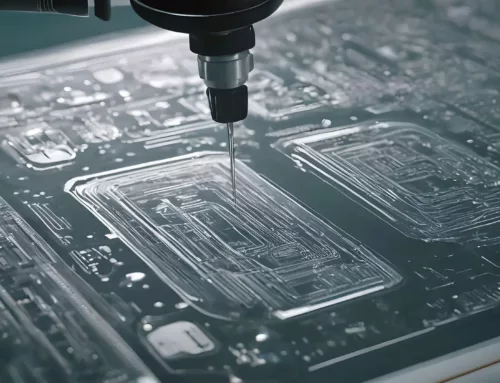
Powder technology has emerged as a game changer across a diverse number of industries, revolutionizing manufacturing processes and enabling remarkable advancements in materials and applications. From aerospace and automotive to electronics and healthcare, the impact of powder technology is pervasive. In this article, we delve into the driving forces behind the growth of the powder industry, explore the exciting advancements in powder technologies, and discuss the trends that could shape its future.
Driving forces behind the growth
The powder industry is experiencing remarkable growth driven by several key factors. One significant factor is the increasing demand for lightweight materials, which stems from the need for improved fuel efficiency and reduced emissions. Powders have emerged as a solution by enabling the production of lightweight parts that maintain strength and durability. Industries like aerospace heavily rely on these advancements, as reducing weight is essential for optimal aerodynamics and operational efficiency. Customization is another driving force behind the growth of powder technology. The ability to create intricate and personalized parts through powder-based processes has led to breakthroughs in medical procedures, implants, and patient care. This customization capability opens up new possibilities for tailored solutions and improved outcomes.
Geopolitics also plays a significant role in shaping the growth of powder technology. The availability and accessibility of raw materials, including rare earth elements like neodymium that are essential in powder technology, can be influenced by geopolitical factors. The distribution of these resources among different countries or regions and the political stability of the nations involved can impact the availability and cost of raw materials. Geopolitical tensions, trade policies, and regulations further affect the global supply chain and trade of materials crucial to powder technology. In response, governments and industry players prioritize research and development in powder technology to enhance their technological capabilities, reduce dependency on external sources, and strengthen their economic and military standing.
Technological advancements and innovations serve as significant driving forces behind the growth of powder technology. Continuous research and development efforts aim to enhance the performance, efficiency, and versatility of powders in various applications such as manufacturing, energy storage, electronics, and healthcare. This relentless pursuit of improvement and innovation fuels the expansion of powder technology and its widespread adoption across industries.
Market demands and industry needs also contribute to the growth of powder technology. Industries seek powder-based solutions to address material efficiency, lightweight, enhanced performance, and cost-effectiveness challenges. The unique advantages of powder technology, including improved material properties, precise control over particle size and composition, and the ability to create complex shapes, make it highly attractive for industries seeking advanced materials and manufacturing techniques.
Furthermore, environmental and sustainability considerations have also become driving forces behind the growth of powder technology. Powder-based processes, such as additive manufacturing or 3D printing, significantly reduce material waste compared to traditional manufacturing methods. This aligns with the increasing focus on resource conservation and sustainable practices, leading to rising interest and investment in powder technology.
Emerging powder technologies
Additive manufacturing, commonly known as 3D printing, is at the forefront of groundbreaking developments in powder technology. This transformative technology allows for the production of complex and customized parts with unprecedented precision and efficiency. Additive manufacturing eliminates the constraints of traditional manufacturing methods, facilitating intricate designs, reduced material waste, and cost-effective production. Powders used in additive manufacturing span various categories, including high-performance powders designed for aerospace, automotive, and medical fields; functional powders tailored for electronics, optics, and coatings; and sustainable powders made from renewable or recycled materials, benefiting packaging, construction, and consumer goods.
Ongoing advancements and trends
Beyond additive manufacturing, continuous advancements in powder technology are observed in other aspects. Powder processing techniques are improving to enhance efficiency and quality, with the development of new equipment and methods for mixing, blending, and drying powders. Refining powder characterization methods enables a better understanding of properties like size, shape, and surface characteristics, enabling precise control over powder behavior and performance. Furthermore, new applications are constantly being developed, leveraging powders in innovative ways across industries.
The transformative impact of powder technology
Powder technology has already revolutionized multiple global industries. Manufacturing and materials science enables the production of complex metal parts and advanced materials with enhanced properties. In pharmaceuticals and healthcare, powder technology facilitates controlled drug release and the production of medical implants. The food and beverage industry benefits from improved powdered products with extended shelf life and enhanced taste. Additionally, powder technology contributes to advancements in environmental and energy sectors, electronics, semiconductor manufacturing, coatings, and surface engineering.
Industry challenges and potential
The powder industry operates in a competitive market, with companies striving to differentiate themselves. To succeed, investments in research and development, quality control, and process optimization are crucial. Establishing a powder production facility requires substantial capital investment, specialized equipment, and skilled personnel. Geo politics, sanctions, finite resources, logistics, and regulatory compliance measures governing the overall production, handling, and disposal of powders add to the complexity and operational costs. However, advancements in technology and shared manufacturing resources are facilitating market entry. Despite challenges, the potential for growth, innovation, and market expansion in the powder industry remains significant.
The future of powder technology
As demand for lightweight materials, customization, and advanced manufacturing techniques continues to rise, the powder industry is poised for substantial growth. Additive manufacturing will play a pivotal role in revolutionizing production processes and enabling unprecedented levels of customization and efficiency. Powder technology’s benefits, including lightweight high-performance parts and tailored components, make it indispensable for optimizing performance, reducing costs, and enhancing sustainability. With ongoing research and collaboration, the possibilities for material advancements, manufacturing techniques, and application areas are boundless.
Powder technology has emerged as a transformative force in global industries, reshaping the way products are designed, manufactured, and utilized. Its versatility, adaptability, and continuous potential for improvement position it as a catalyst for innovation. By embracing the opportunities presented by powder technology, industries can achieve greater efficiency, sustainability, and customization, redefining the landscape of manufacturing. The ability to produce lightweight yet high-performance parts directly contributes to fuel efficiency, range, and payload capacity in sectors like aerospace. Customization and precision ensure optimal compatibility, patient comfort, and improved treatment outcomes in healthcare. The adaptability and continuous potential for innovation make powder technology a valuable tool in addressing diverse industry needs and driving advancements.
The rapid expansion of additive manufacturing, with its versatility, cost-effectiveness, and ability to create complex geometries, is driving the increasing demand for powders. As materials and printing technologies advance and become more accessible, the powder industry is expected to experience significant growth. Researchers are continually pushing the boundaries of powder materials, developing compositions with enhanced properties and performance. High-strength steel powders, for example, are revolutionizing the automotive industry by offering a combination of lightweight characteristics and exceptional strength.
The global powder market is poised for substantial growth in the coming years. The Asia Pacific region, in particular, is expected to experience significant expansion due to rapid industrialization, infrastructure development, and the adoption of advanced manufacturing technologies. This presents opportunities for the powder industry to meet the growing demand and cater to evolving needs. However, the powder industry does face challenges. The intense market competition puts pressure on companies to differentiate themselves and attract customers while maintaining cost competitiveness. Establishing a powder production facility requires significant capital investment, specialized equipment, and skilled personnel. Government and regulatory compliance measures add complexity and operational costs, but adherence to these measures is crucial for maintaining industry standards, consumer trust, and long-term sustainability.
Finally, as researchers, manufacturers, and industry stakeholders collaborate to push the boundaries of powder technology, the possibilities for material advancements, manufacturing techniques, and application areas are limitless. Powder technology will continue to drive innovation, shape the future of manufacturing, and unlock new possibilities across industries.




